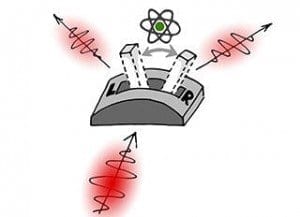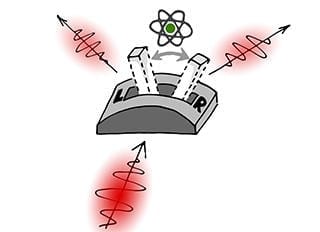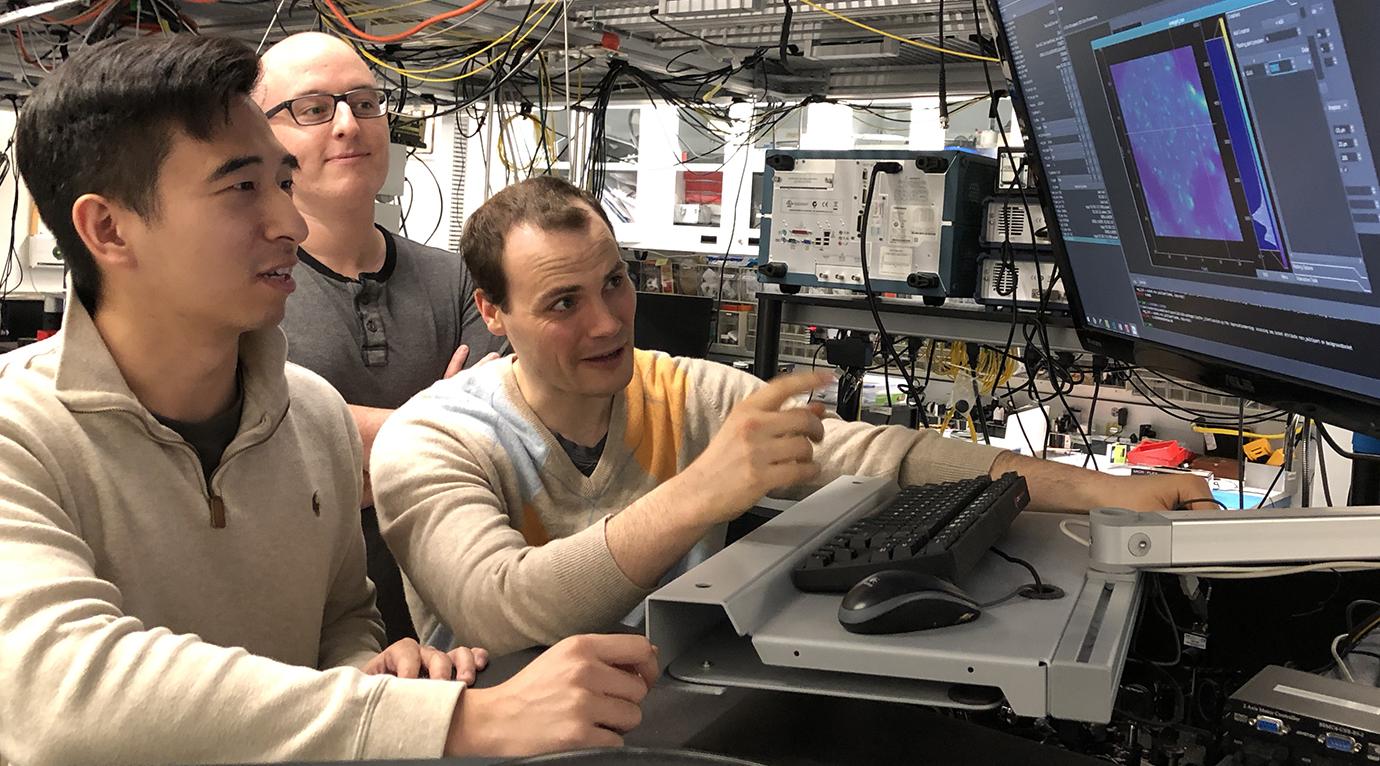
“We will no longer need any exotic machinery which is only found in laboratories”
With just a single atom, light can be switched between two fibre optic cables at the Vienna University of Technology. Such a switch enables quantum phenomena to be used for information and communication technology.
Fibre optic cables are turned in to a quantum lab: scientists are trying to build optical switches at the smallest possible scale in order to manipulate light. At the Vienna University of Technology, this can now be done using a single atom. Conventional glass fibre cables, which are used for internet data transfer, can be interconnected by tiny quantum systems.
Light in a Bottle
Professor Arno Rauschenbeutel and his team at the Vienna University of Technology capture light in so-called “bottle resonators”. At the surface of these bulgy glass objects, light runs in circles. If such a resonator is brought into the vicinity of a glass fibre which is carrying light, the two systems couple and light can cross over from the glass fibre into the bottle resonator.
“When the circumference of the resonator matches the wavelength of the light, we can make one hundred percent of the light from the glass fibre go into the bottle resonator – and from there it can move on into a second glass fibre”, explains Arno Rauschenbeutel.
A Rubidium Atom as a Light Switch
This system, consisting of the incoming fibre, the resonator and the outgoing fibre, is extremely sensitive: “When we take a single Rubidium atom and bring it into contact with the resonator, the behaviour of the system can change dramatically”, says Rauschenbeutel. If the light is in resonance with the atom, it is even possible to keep all the light in the original glass fibre, and none of it transfers to the bottle resonator and the outgoing glass fibre. The atom thus acts as a switch which redirects light one or the other fibre.
Both Settings at Once: The Quantum Switch
In the next step, the scientists plan to make use of the fact that the Rubidium atom can occupy different quantum states, only one of which interacts with the resonator. If the atom occupies the non-interacting quantum state, the light behaves as if the atom was not there. Thus, depending on the quantum state of the atom, light is sent into either of the two glass fibres. This opens up the possibility to exploit some of the most remarkable properties of quantum mechanics: “In quantum physics, objects can occupy different states at the same time”, says Arno Rauschenbeutel.
Go deeper with Bing News on:
Single-Atom Light Switch
- Nintendo confirms its next console will be in the Switch family — here’s what we know
Nintendo confirmed it will announce “the successor to Nintendo Switch” before the end of March 2025. While this appeared to be confirmation of the long-rumored Nintendo Switch 2, the company’s ...
- The World's First X-Ray Of A Single Atom
Scientists have been able to characterize a single atom using X-rays. Not only they were able to distinguish the type of atoms they were seeing (there were two different ones), but they also managed ...
- 'Goldene': Researchers Create a Single Atom Layer of Gold
We preselected all newsletters you had before unsubscribing.
- A single atom layer of gold—researchers create goldene
For the first time, scientists have managed to create sheets of gold only a single atom layer thick ... in the reaction when it is struck by light, and it dissolves gold. The last step was ...
- A single atom layer of gold: Researchers create goldene
For the first time, scientists have managed to create sheets of gold only a single atom layer thick ... in the reaction when it is struck by light, and it dissolves gold. The last step was ...
Go deeper with Google Headlines on:
Single-Atom Light Switch
[google_news title=”” keyword=”Single-Atom Light Switch” num_posts=”5″ blurb_length=”0″ show_thumb=”left”]
Go deeper with Bing News on:
Microplastics in water
- Tiny tenacious robots snatch bacteria and microplastics out of the water
Scientists have developed tiny "robots" which appear to be very effective at removing microplastics pollution from water. What's more, the little bots also target the harmful bacteria that often hitch ...
- Swarms of miniature robots clean up microplastics and microbes, simultaneously
When old food packaging, discarded children's toys and other mismanaged plastic waste break down into microplastics, they become even harder to clean up from oceans and waterways. These tiny bits of ...
- America has a $250 billion problem: Microplastics have invaded our bloodstreams and may increase the risk of heart attack and stroke
Plastic-based products and their detritus are everywhere on Earth. Microplastics are in the food we eat, even raw fruits and vegetables, and have been found in both tap and bottled water. California ...
- Magnetic microrobot swarms clean water of microplastics and bacteria
Microplastics are one of the biggest environmental and health risks faced by our generation. Now, researchers have developed swarms of tiny robots, or microrobots, that not only microplastics from ...
- Swarms of miniature robots clean up microplastics and microbes, simultaneously (video)
When old food packaging, discarded children’s toys and other mismanaged plastic waste break down into microplastics, they become even harder to clean up from oceans and waterways. These tiny bits of ...
Go deeper with Google Headlines on:
Microplastics in water
[google_news title=”” keyword=”microplastics in water” num_posts=”5″ blurb_length=”0″ show_thumb=”left”]











